220714
Research
A single camera production is a way of filming tv programs or movies. This shows the audience the scene or shot through one camera, making each shot looks like it has been taken individually. The limitations of using the single camera techniques is that it requires more time to shoot. Whereas, the benefits of using the single camera techniques is that it provided a more cinematic feel to the end product, allows you to reshoot, makes it easier to film because you only have to take care of one camera, it's more affordable
A multi camera production enables a number of different cameras top record performances or events at the same time. This is used more in sports, music gigs and large popular events. The limitations of using multi camera techniques is that when recording something you would have to concentrate on multiple different cameras which can be difficult. Whereas, the benefits of using multi camera techniques adds additional camera angles allow you to cut from a wide shot to a close up, which not only helps stop a scene from dragging on, but also adds depth to your story.(https://www.timecodesystems.com/why-shoot-multicamera/)

Documentaries
Documentaries use a singular camera set up because this enables the crew to be focussed on one person at a time. They could also save a lot of money and could save time also.

TV drama
TV dramas use a multi camera set up because TV dramas take a long time to film as they are long episodes so using a multi camera set up would be faster than using a single camera.



Soap(UK)
Sitcom(US)
Sports Events
Soaps and sitcom's use a single camera set up because soaps and sitcom's are usually 30 minutes+ long but multi camera's can be used as soaps can be filmed on sets
Sports Events use a multi camera set up because just incase one camera is not working or was not recording then they have more than one camera that was probably recording and in sports events you can't re record.


Music Video
Music Video's use a singular camera set up because this will make it easier for the camera person to move around with one camera.

Youtube vlog
Advertisements
Youtubers that do youtube vlogs use a single camera set up because they don't have a camera crew with multiple cameras and during vlogs they move around with their cameras so it would be easier to walk around with one camera then more than one
Advertisement use a singular camera set up because there would be no reason top use a multi camera set up as adverts are like 30-60 seconds


Camera techniques
Movements
Framing
Angles/shots
Tracking:
Extreme long-shot:
Birds eye view:
Tracking is a camera physically moving in or out or left to right following a subjects movements this is also known as dollying.

Zooming:
An extreme long-shot is when the cameras focus is on the location, there is no subject or it's far away
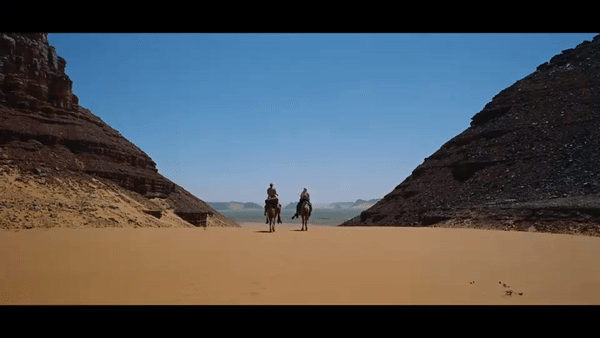
Long shot:
This is when the shot is taken from directly above looking down on to the action or point of interest. This is used to give an overall establishing shot of a scene, or to emphasise the smallness or insignificance of the subjects.(https://en.wikipedia.org/wiki/Bird%27s-eye_view)
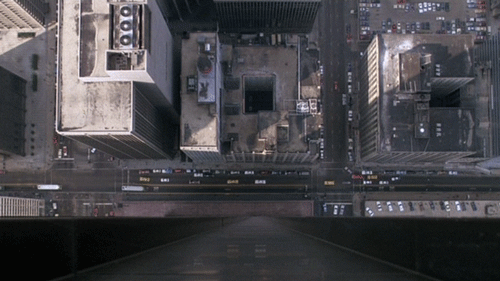
Zooming is when the camera lens moving in or out of a subject. The lens movement moves but the camera remains stationary. This is used because as the camera remains stationary we might not be able to see the character from a far so zooming in is the best option
A long shot is when the cameras focus is on the subjects whole body with the subject framed head to toe.
Worms eye view:

Worms eye view is opposite to birds eye view and this is when the shot is taken directly below looking up to the action or a point of interest. This is used to possibly make an object tall and strong.
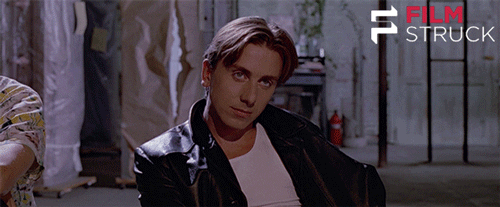
Medium long shot:

Tilting:
This is when the cameras focus is on the subjects body with the subjects framed from the knees up. This is used to show how lonely a character is at the centre of an empty frame.(https://www.adobe.com/creativecloud/video/discover/medium-long-shot.html)
High/low angle
Shot taken diagonally above/below action or point of interest looking down/up.
Tilting is when the camera moves up or down only whilst the camera remains in a stationary position.
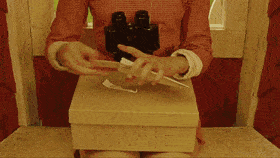
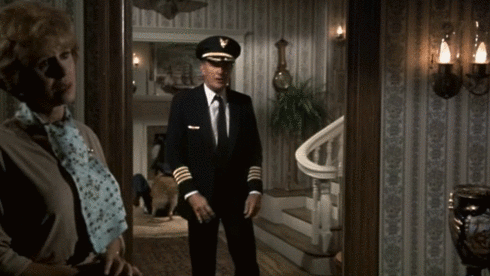
Panning:
Mid shot:


Panning is when the camera moves left or right only. The camera remains in a stationary position. This is used to follow actions such as a character moving from one stop to another. (https://www.bbc.co.uk/bitesize/guides/zg6ffrd/revision/3)
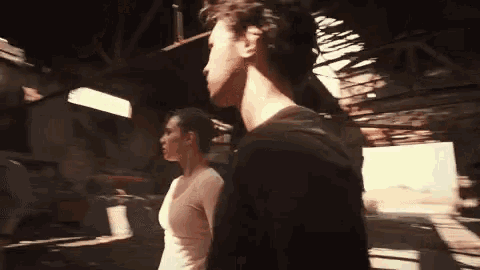
Mid shot is when the cameras focus is on the subjects whole torso with the subject framed from head to waist. This is used to draw attention to both the character and their surroundings by giving them equal space in the frame.(https://www.adobe.com/creativecloud/video/hub/ideas/what-is-a-medium-shot-in-film#:~:text=Also%20called%20a%20waist%20shot,equal%20space%20in%20the%20frame.)
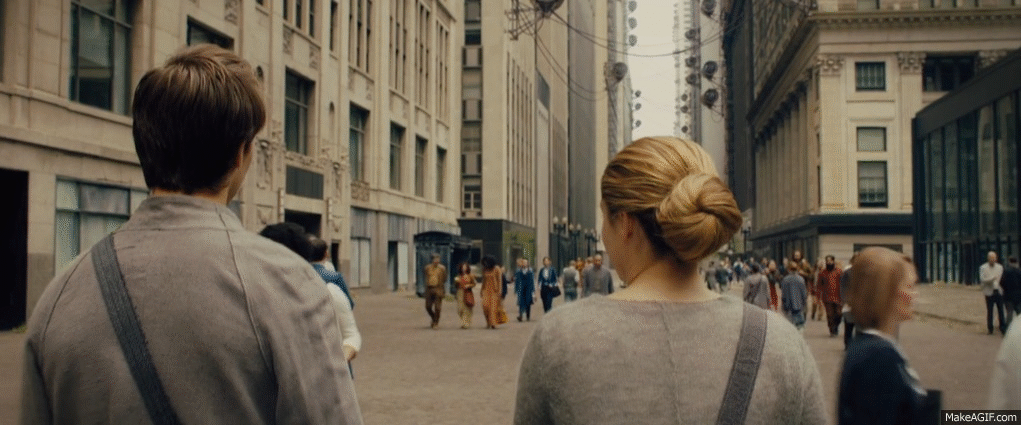
Canted angle
This is an unbalanced shot where the physical camera itself is placed at an unorthodox angle.
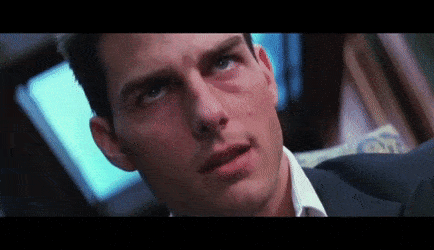
Wide angle
Stedi-cam:
This is when the shot is taken from a distance in order to frame more than 2 subjects at the same time.
Medium close up:
This is when a camera follows a subjects movement whilst physically attached to a camera operator
This is when the cameras focus on subjects upper torso the subjects is framed from head to chest.
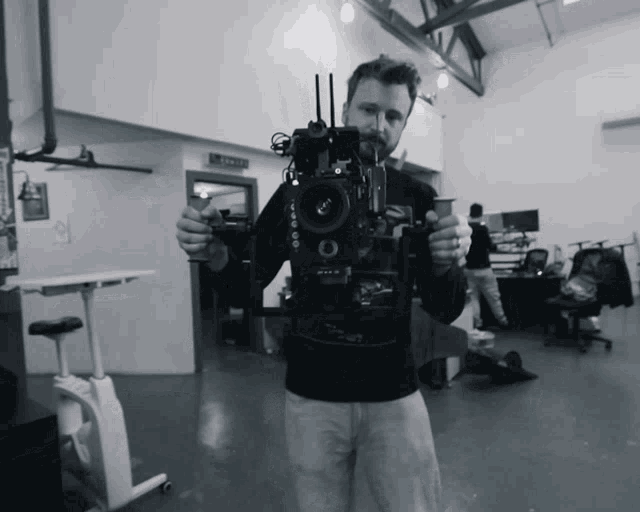
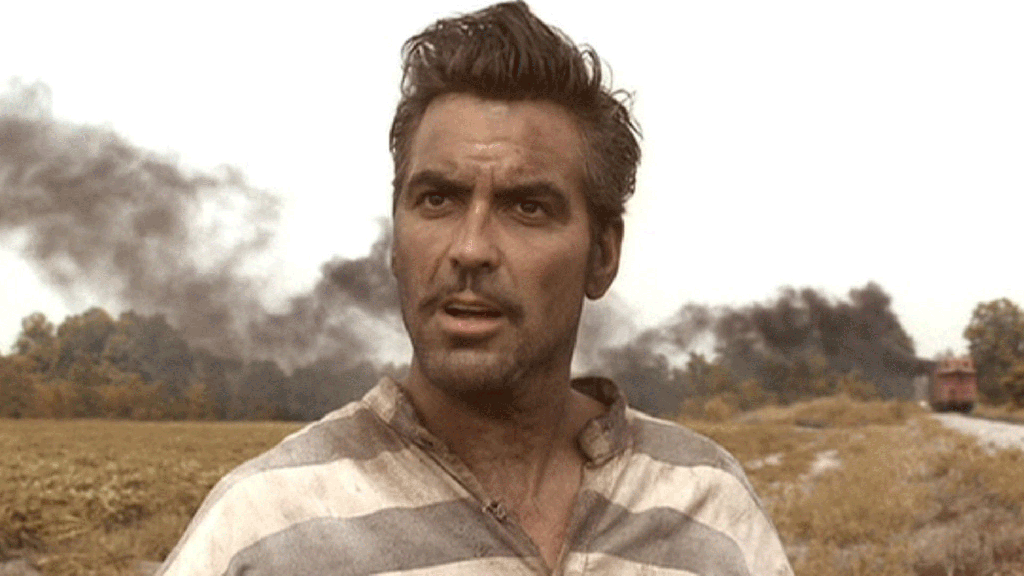
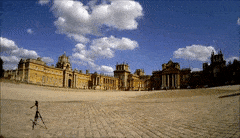
Two shot:
The shot is taken at eye level, that frames 2 subjects in the same place at the same time.
Hand-held:
Close up:
A hand-held movement is when the camera is not mounted and therefore has a jerky action, creating a sense of realism.
This is when the cameras focus is on the subjects profile subject framed from head to toe.
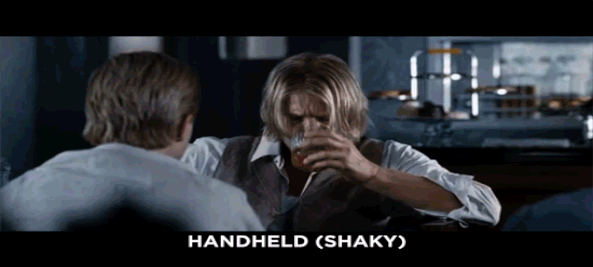

Big close up:
The cameras focus is on the subjects facial expression the subject is framed from eyes to mouth.
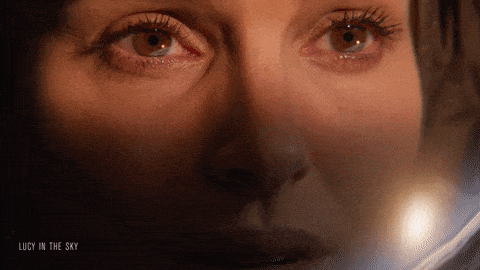

Over the shoulder
This shot is taken from behind a subjects shoulder. This is used to engage in conversation.

Point of view:
Shot taken from a subjects line of sight allowing the audience to see what the subjects see.
Extreme close up:
This is when the cameras focus is on the subjects facial elements with specific features framed
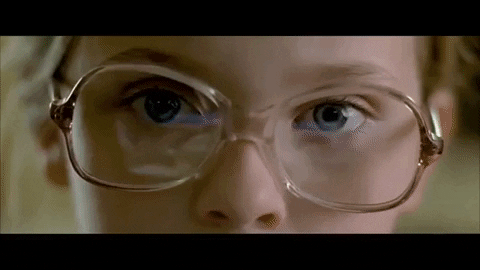
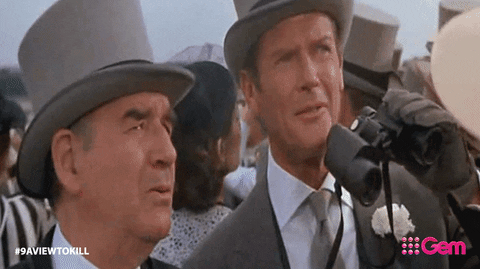
Establishing shot:
The shot is taken from an extreme distance always occurring at the start of a scene.
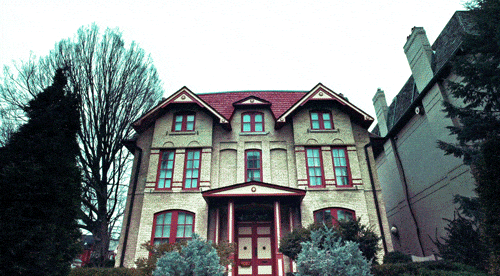
Settings
Focus:
Focus is the process of capturing your subject in a crisp, sharp image. Whether using manual focus or auto focus controls on your camera, there is no fixing an out-of-focus photo (even using the very best software).
Extreme long shot:

Mid shot:

Long shot:
Medium long shot:


Medium close up:

Extreme close shot:

Aperture:
Aperture is 'the opening in the lens'. When you hit the cameras shutter release button, a hole opens up that allows your cameras image sensor to catch a glimpse of the scene you're capturing. The aperture you set impacts the size of that hole. The larger the hole = more light enters and the smaller the hole = less light enters

F.22

F.11


F.18
F.9.0

F.14

F.7.1



F.5.6
F.4.5
F.3.5

F.2.8

F.2.2

F.1.8
Shutter speed:
Shutter speed is 'the amount of time that the shutter is open'. In digital photography and digital video, shutter speed is the length of time that your image sensor 'sees' the scene you're attempting to capture.

1/4

1/30

1/250

1/8

1/15


1/60
1/125

1/500
ISO:
ISO is your camera's sensitivity to light as it pertains to either film or a digital sensor. A lower ISO value means less sensitivity to light, while a higher ISO means more sensitivity.(https://www.adobe.com/creativecloud/photography/hub/guides/when-to-use-low-iso-settings#:~:text=ISO%20is%20your%20camera's%20sensitivity,higher%20ISO%20means%20more%20sensitivity.)
100
200
400
800
1600
3200
6400
Focal Length:
Focal length is one of the most common uses for zoom lenses is to zoom in on objects that are far away. While this flexibility might seem tempting for getting close to awkward objects, there is another benefit of zoom lenses when taking portraits in front of a vast spread of scenery- background compression.
The 'rule' of thumb is to choose a shutter speed with a denominator that is longer than the lens focal length. For example, a lens that is 50mm 1/60th is probably ok but if you have a 200mm lens you'll shoot at 1/250.

18

35

80

200

28

50

135

300
LAA: CORE ASSESSMENT
This slow zooming moment at (0:00-0:03) is used to show tension but also allows the audience to see their facial expressions clearly and also intrigues the audience to know what’s coming next in the scene. This specific part of the scene uses a single camera production. A panning movement is also used at (0:15-0:17) this is used because it shows each of the two girl’s emotions as an individual. The use of the medium close-up in the mug shots scene is used to portray realism on how they are taken. The zooming movement started at (0:20-0:30) lasting for 10 seconds this was used on the girl because she was the protagonists in this scene as it was about her going to plead guilty for jail. They used a point of view shot but it could also be a over the shoulder shot at (0:50) this shot is usually used to make the audience feel like they are in the scene with the actors.
This scene in pretty little liars at (0:11) they used a mid-shot which could be used to see the woman who stood up outfit clearly because the mid shot is from head to waist which is all we can see in this scene. The close up of the judge banging the hammer when Alison pleaded guilty at (0:56) is used because this shows the tiny detail. There’s another over the shoulder shot used at (0:30) this is used to show Alison and her lawyer engaging in a conversation with each other but could also make the audience feel like they are engaging in the conversation as well.
A two shot is used at (0:16) this shot is mainly used to capture two characters in the same scene. This two shot is also used at (0:19) capturing Alison and her lawyer standing before the camera is completely zoomed on Alison also the aperture in this scene could be up to F22 meaning the F stop because Alison Dilaurentis and her lawyer is in focus but the people sitting down in the back are blurry because the smaller the hole is less light enters.
In this scene at (0:06) they use a medium close-up on Alison’s face they might’ve used this to show her facial expressions which is your NVC(Non Verbal Communication) that she is waiting nervously for the results if she pleads guilty or not but eventually she does. At (0:10) as the lady stands up a low angle to make it look like the video was taken by someone sitting down in the court room could also have this effect on the audience because they are also sitting down so it could make them feel like they are apart of the scene. The is also a medium close-up on Emily at (0:14), this could be used to show the tension in the room and between Emily and the judge waiting for the decision but also to show she is scared as they are focussing on the detail on her face which are her eyes being wide and her mouth a little bit open as if she’s gasping for air because of how nervous she is.
The panning movement was used at (0:26-0:28) this was used to possibly emphasise the setting of a park with the little girl and adult. At (1:05) the use of a medium close up was this and the case which they might’ve used it was because it gets the audience intrigued on what the person speaking is saying also it enables us as an audience to see their real emotions with the camera close to their face.At the time (3:09-3:15) they used a medium close up on the girl speaking about her life with a disability this is so as an audience we can really understand her emotions as she talks and see her real emotions and how she’s feeling talking about it in a realistic way. They used a medium long shot at (3:19-3:24) because you can also tell how someone is feeling through their body language which comes under NVC (Non Verbal Communication), they also used it at (4:18-4:24).
They use a panning movement at (0:23-0:25) with one of the girls talking coming through the door this could be used for showing the location or just an introduction to who’s in the documentary. They used a stedi-cam at (10:31) following the movements but from in front of the two characters. The use of hand-held was used at (12:40) because this would feel like we are walking with her because of the shaky camera which creates a sense of realism.Tracking movement which is also known as dollying at the time (10:55) when the adult was pushing the child on the swing to give a close up and as an audience we could also see their facial expressions and could tell that they are having fun at the park.
When showing the pictures for example when they were showing Caprices model pictures they used tilting to show the whole of the pictures when she was talking about how she always has her crutch in all of her photos. They also used panning when Caprice was talking about the campaign Leigh-Anne Pinnock to show how all the models she used and also show how “they were different In their own way”.At the beginning when Caprice came in the door there was a panning movement used also a medium long shot used to show that she is sat and ready to start talking about her disability and also I think that they used a medium long shot to get her crutch in the shot at (0:31). A low angle could’ve possibly been used to make it seem like an interview an also maybe make the audience seem like they are sat down with Caprice and Aisha.
At the point (1:10-1:15) there is a use of tracking, zooming, wide angle and a low angle. Tracking was used as Kehlani was walking but at the same time zooming was used because the camera person was zooming out and including a wide angle so whoever is filming can capture Kehlani and also the people in the background. They used a low angle to make Kehlani seem intimidating and superior. At the point (0:15) as she is walking down the stairs they used a medium close up this could be used in music videos so the audience could understand what the singer is singing if they can’t actually understand what they are saying by just listening to it. They used aperture which was a f-stop of 2.8 because Kehlani is in complete focus but the people at the back is blurry but not completely because we can still see their outline and stuff like what they are wearing. For example, we can see that there’s a waiter by the way she’s dressed and there’s men in suits at tables with alcohol so by this we could also tell the location where they are which seems like it’s in a restaurant/bar.
They used a medium mid-shot at (2:13) when the woman walks up to Kehlani and “accidently” pours her glass of wine on the singer. They might’ve used this to show what’s happening clearly except from us watching from a far and also shows the woman’s facial expressions and how she could come across as entitled and snobby because she might be rich because of the location they are at. At the moment starting at (3:49) they used a panning movement moving right with the shoes as Kehlani and the dancers come into their dance sequence. They also us a quick cut from them running then to the start of dance to make it more energising because it’s just a fast cut with no slow transition in between.
They used an over the shoulder shot at some points like for example at (3:53) because this has would have an effect on the audience like they are sitting behind some people at their tables watching Kehlani and the dancers dance this could also be a point of view shot. They used a mid shot on some of the people to show how they all have different reactions like the white people have more of a stubborn face as the are dancing compared to the two black men at (4:04) they are getting into the feel of the music and coming with full on vibes. They used a close up of her grabbing the whine glass filled with whine at (2:52) just to show to the audience what she through behind her at the stove on fire. A medium close up was used at (3:10) after Kehlani threw the drink at the woman who spilled whine on her earlier to show her facial expressions earlier which comes under NVC.
At the moment (3:29) the camera person used a zooming shot and a two shot. They might’ve used zooming to zoom in on the features of the pianist and the singer. A two shot was used to incorporate the two people in the shot to show that the singer is singing to the piano man playing the piano. There were medium long shots at the point when the back up dancers were trashing the restaurant throwing all the customers food around, this was used so we can see the situation that is occurring vividly.
Grow Your Vision
Welcome visitors to your site with a short, engaging introduction.
Double click to edit and add your own text.


~OLIVIA~

